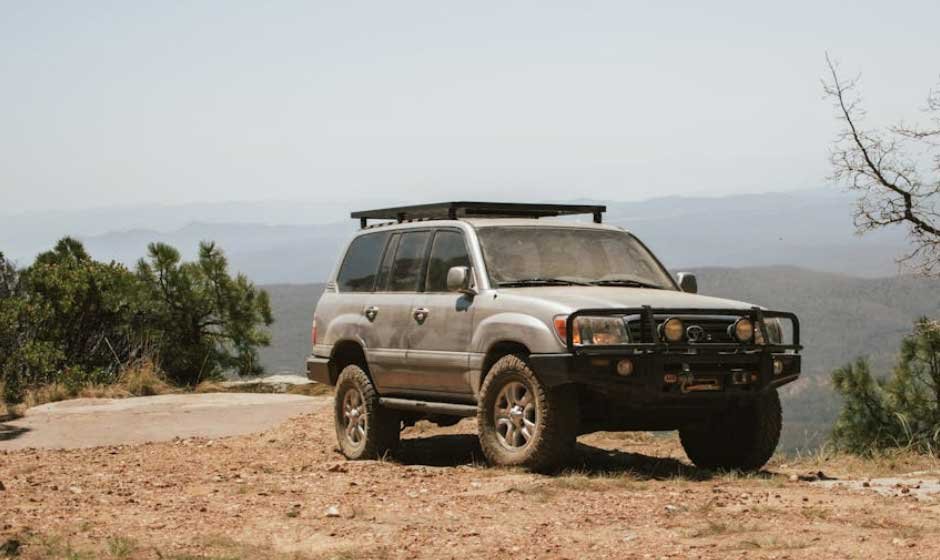Adding weight to the nose of a vehicle shifts the balance of the entire ride. Even a seemingly modest addition can alter handling, tweak suspension geometry, and change braking dynamics. The weight has to go somewhere, right?
In a 4WD, every kilo up front changes how forces travel through the chassis. That’s why understanding weight distribution is a fundamental part of making sure your rig feels planted, predictable, and ready for whatever track lies ahead. So, before you look for the best Ford Ranger bull bar suppliers Australia has to offer, listen up.
The Physics of Extra Weight Up Front
Weight distribution is one of those things you don’t notice until it’s off-kilter. That bull bar you just installed shifted the centre of gravity forward. Suddenly, steering feels heavier, the front axle shoulders more load, and the tyres at the front have to manage a larger contact patch with the ground.
The additional mass changes how the chassis flexes, how momentum carries through corners, and how braking loads get distributed. It’s not necessarily a bad thing—it just means the whole system has to be recalibrated to cope. Ignore it, and you’ll start to feel it in uneven steering response, sloppy cornering, or tyres that wear faster than you’d expect.
Suspension Dynamics: What Really Changes
The suspension cops the brunt of a bull bar’s weight. Springs compress more than they used to, and shocks work overtime to control the extra motion. Ride height at the front drops slightly, which might not sound dramatic, but that loss of clearance affects approach angles off-road. Under braking, you’ll notice more nose-dive, as the weight bias up front amplifies forward pitch.
Over time, factory shocks and springs fatigue quicker, simply because they weren’t designed for the load. Tyres also wear differently—the added strain means the tread can scrub unevenly, especially if the alignment isn’t reset.
Braking and Stopping Power: Not Just About Pads and Rotors
Braking isn’t just a game of pads clamping rotors. It’s a physics problem, and the bull bar adds another layer to the equation. Extra weight at the nose means more momentum pushing forward.
When you stomp on the brake, that load dives onto the front axle harder than before, lengthening stopping distances. Sure, fitting upgraded rotors and pads helps, but it’s only part of the fix.
Suspension plays a massive role in how effectively a vehicle transfers weight under braking. A balanced setup ensures the rear wheels still contribute instead of leaving the front end to do all the heavy lifting.
Off-Road Realities: Terrain and Weight Shifts
Take the rig off the blacktop, and weight distribution matters even more. Climbing rocky steps feels different when the front end carries extra kilos. The bar pulls the nose down, making approach angles shallower.
In deep ruts, the weight pushes the suspension further into compression, reducing articulation. Descending steep pinches can feel twitchier too, as the bar’s mass exaggerates the front-heavy sensation. In mud or sand, the extra load on the front axle often means the tyres dig in sooner, biting through the surface instead of skimming over it.
Experienced off-roaders quickly learn to adjust. A little more throttle climbing, a touch more finesse on descents, and a keen eye on wheel placement in soft terrain—it all helps.
Fuel Economy and Long-Term Wear
Carrying more weight always comes at a cost. With a bull bar bolted on, the engine works harder to move the added mass, especially noticeable when towing or long-haul touring.
Over thousands of kilometres, those extra kilos compound into more fuel burned. But it’s not just the tank that feels it. Driveline components—CV joints, wheel bearings, even the differential—absorb more strain from the shifted load. That doesn’t mean parts are going to fail tomorrow, but the wear curve steepens.
Spread across years of driving, you’ll notice service intervals tightening and components needing attention sooner. It’s the mechanical equivalent of carrying a mate piggyback on a long hike. You’ll get there, but your knees and back will remind you of the effort.
Pairing Bull Bars With Suspension Upgrades
A bull bar by itself is rarely the issue. It’s the suspension underneath that decides whether your four-wheel drive stays comfortable and capable.
Fitting heavier-duty springs designed for accessory loads is one of the smartest moves you can make after adding a bar. They restore lost ride height, keep steering geometry in check, and take the sting out of nose-dive. Upgraded shocks round out the package, soaking up bumps with more control.
Managing Load Across the Whole Vehicle
The bull bar is just one piece of the weight puzzle. Throw in a roof rack, drawer system, dual batteries, or a long-range tank, and suddenly the scales tip heavily. What matters isn’t just how much weight you’re carrying but where it sits across the chassis.
Front-heavy rigs understeer and chew through tyres, while rear-heavy setups sag, sway, and feel unsettled. The sweet spot is even load distribution across all axles. Here are some ways to balance vehicle load after adding a bull bar:
- Distribute cargo across axles rather than overloading the rear.
- Consider GVM upgrades if running multiple heavy accessories.
- Use suspension tuning to keep the ride level.
- Regularly weigh the vehicle to check axle loads.
Compatibility: The Non-Negotiable Factor
Compatibility is critical. The bar has to work with the vehicle’s chassis, suspension, and electronic safety features to avoid long-term headaches. The right bull bar should feel like a natural extension of the 4WD, strengthening protection and balance in one go. And by right, we mean if you drive a Ford Ranger, you should get a bar that’s made specifically for a Ford Ranger. That shouldn’t be a problem if you look into top brands like Ironman 4×4.













